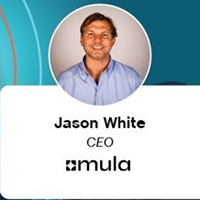They don’t even call it the information superhighway anymore, but the Internet is still putting a big twist on marketing road shows – both in the way consumers experience events and in the way managers handle them.
Mobile marketers are using the Internet to extend the reach of their advertising schedule, give consumers better and updated information about the event (not to mention the brand it’s pushing), and provide a stronger plug for co-marketing partners and sponsors.
“Mobile marketing and the Web are both relationship-building vehicles. Companies are [increasingly] searching for strategies that connect the two,” says David Langston, principal of Langston Marketing Communications in New York City.
On the road, marketers can offer a little Internet flavor – banners and signs touting a company’s URL, say – or a full-course meal, like a computer tent that lets attendees log on and lock into a brand’s Web site.
Those measures are just the beginning. The Internet is now allowing marketers to reach consumers who otherwise would have never gotten anywhere near the hospitality tent by bringing the event experience online. Efforts range from something as simple as posting digital pictures and a tour itinerary on a dedicated Web site to hosting a live “Webcast” of the event. Either way, marketers are learning that brand interaction works virtually, too.
“The Webcast is somewhere between the live experience and a traditional media broadcast,” and gives viewers a sense of getting an exclusive look at an event, says Steve Greifer, general manager of event marketer Contemporary Marketing, Inc., Totowa, NJ. And unlike a live event, Web footage can be archived and revisited by the consumer at a later date – or used again by the marketer.
An increasing number of marketers – most notably brands targeting the college audience – are treating the Webcast as a necessary component to the mobile campaign, and adding a significant number of eyeballs in the process. While that might be an overly ambitious step for many marketers, it takes little more than a few digital cameras and an on-site laptop to transmit tour images to a Web site and increase a program’s reach. At the very least, the Web link can be used – along with the more traditional route of TV, radio, and print ads – to drive more consumers out to the event.
Here’s a rundown of the ways marketers are starting to use the Internet to get stay-at-home consumers out to the show – either literally or figuratively.
Playing in Peoria: Few mobile tours have the funds to hit every one-horse town in America, but the Web can make it possible.
The Las Vegas Convention & Visitors Authority has been visiting select cities for month-long visits since 1998 to promote the city’s attractions. Last year’s tour, The Ultra Lounge Extravaganza, featured a complementary Web site that gave the rest of the country a glimpse of the glitter. Visitors to ultralasvegas.com learned about the event and the city, and were able to register to win a trip to Sin City. They also left behind their names and other vital data the tourism organization can use for targeted messages, says Donna Graves, vp-strategic marketing at Calabasas, CA-based RPMC, Inc., which handles.
Feeding the head: The typical consumer can only absorb so much product information before and after a half-hour stage show. And you can’t really expect him to head home from a concert with an armful of spec sheets. But you can stock a Web site with as much information as you’d like, and give event attendees enough of a brand experience to make them want more.
When Procter & Gamble took its Pantene shampoo on tour in last year’s Hats Off For Cancer effort, it directed consumers to a dedicated site for more information on the charity tie-in. “We were responding to 100 e-mails a day,” says Michael Napoliello, director of client services at Torrance, CA-based U.S. Marketing & Promotions, which handled.
Packing the rafters: The right Internet hook can boost event participation. On a retail tour last year, Stanley Tools, New Britain, CT, built anticipation through an online sweeps. The events gained incrementally from the cyber exposure, says Langston, who helped plot the tour that let Stanley showcase a new product line.
Keeping things loose: A rigid itinerary gains flexibility when there’s a way to update the schedule quickly – heck, immediately.
Stanley Tools found the Web a useful way of substituting stores during its intricately plotted tour, which allowed trucks to stay no more than 35 hours at any location. The toolmaker’s short-term decisions on calendar changes were immediately reflected on the Web site.
Greasing the partners: A Web site offers more room for product pitches from partners. Corporate sponsors of Las Vegas’s Ultra Lounge Extravaganza, such as music label Capitol Records and retailer Tower Records, were featured on the site, which provided hyperlinks to their own Web domains. An offer for a Capitol Records Ultra Lounge CD at Tower Records was e-mailed by the partners to their own customers.
Taming the beast: “People get excited and confused at mobile events,” notes RPMC’s Graves, who claims that The Ultra Lounge’s computer stations served to relax visitors and help them absorb more information – after they’d been bedazzled by Elvis impersonators, red velvet couches, and leopard-skin rugs.
Capturing the moment: Digital photo technology lets marketers send a piece of their event anywhere they want. Sprint set up communications centers in 10 major-market hospitals last year for a Mother’s Day Point of Contact campaign. New moms and dads could make their birth announcements via e-photos (or call the Luddites in the family on a Sprint PCS phone). Friends and relatives who received the e-mails, which were hot-linked to a Sprint Web site, could then pass them along to others.
Kicking it live: Full-blown Webcasts are still rare, but increasing in number.
Ford Focus only sent 600 or so sweeps winners to see the Concert on the Creek, a November tie-in event with Columbia TriStar featuring musicians who’d supplied music to the Dawson’s Creek TV series. But it also simulcast the event live at focus247.com for the thousands of series fans who didn’t win tickets. Virtual attendees naturally found a lot of details about Focus to keep themselves occupied between acts.
BEHIND THE SCENES
The Web has also become an excellent way for field managers to update the folks back in corporate about the tour. Sales & Marketing Group, Kansas City, MO, provides clients with software that lets them track events through full-motion streaming video. “The Web is an extremely efficient way to give clients a flavor of events which they might otherwise have to fly out to see in person,” says Sales & Marketing president Keith Province, adding that it’s also a good way to train field staffers. “The technology is still relatively new. The challenge is the speed of the connection.”
Providing Internet access on-site also lets attendees give immediate feedback on the event and the product, allowing marketers to adjust a program before the next stop if it’s not scoring with consumers. “There isn’t a rig that goes out that we don’t put a dish on top of. You’re generating fresh, untainted data,” says Vince Parrinello, president of Group III Promotions, Chicago. “We [can] collect 50,000 names at an event.”
“We put an event analysis template on our e-mail system for downloading data to the client or to ourselves, [although] there are still some clients out their who want a weekly fax,” notes Steve Randazzo, president of St. Louis-based Pro Motion Inc., which has conducted tours for Budweiser, Black & Decker, and the Connecticut Lottery.
Anheuser-Busch this quarter launched an internal Web site to provide its national wholesaler network with a one-stop shop for event marketing logistics. Wholesalers will be able to track the perambulations of the Budweiser Beer School and the new Bud World program (see Campaign Trail), says Anheuser-Busch director of special event marketing Mark Greenspahn. A wholesaler preparing for a visit can tap into the site – instead of that 75-page binder – to customize P-O-P and make other preparations.
So you can learn about beer online. And you can market beer online. But you still can’t taste beer online – which means there’s still some room left for the actual event.
 Network
Network

